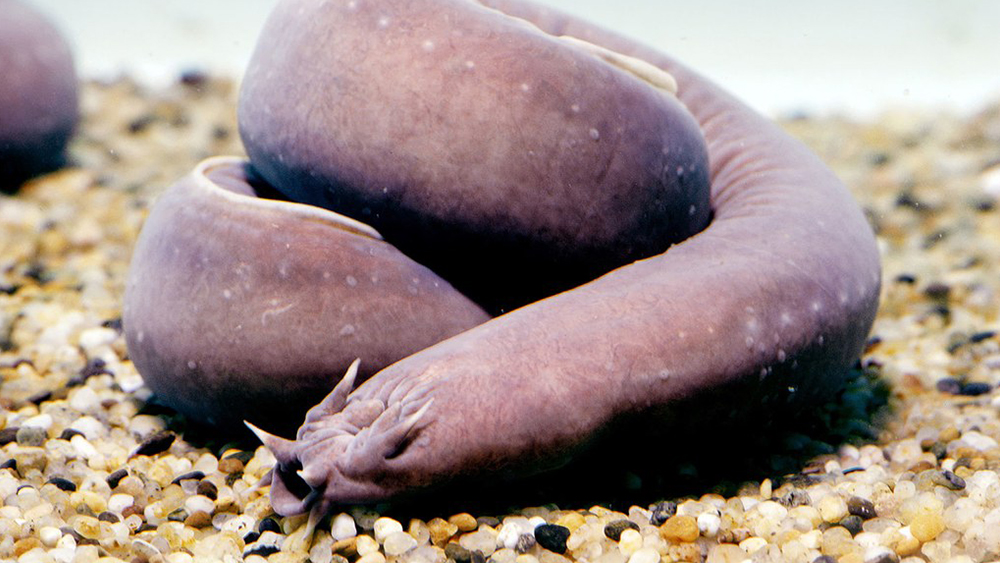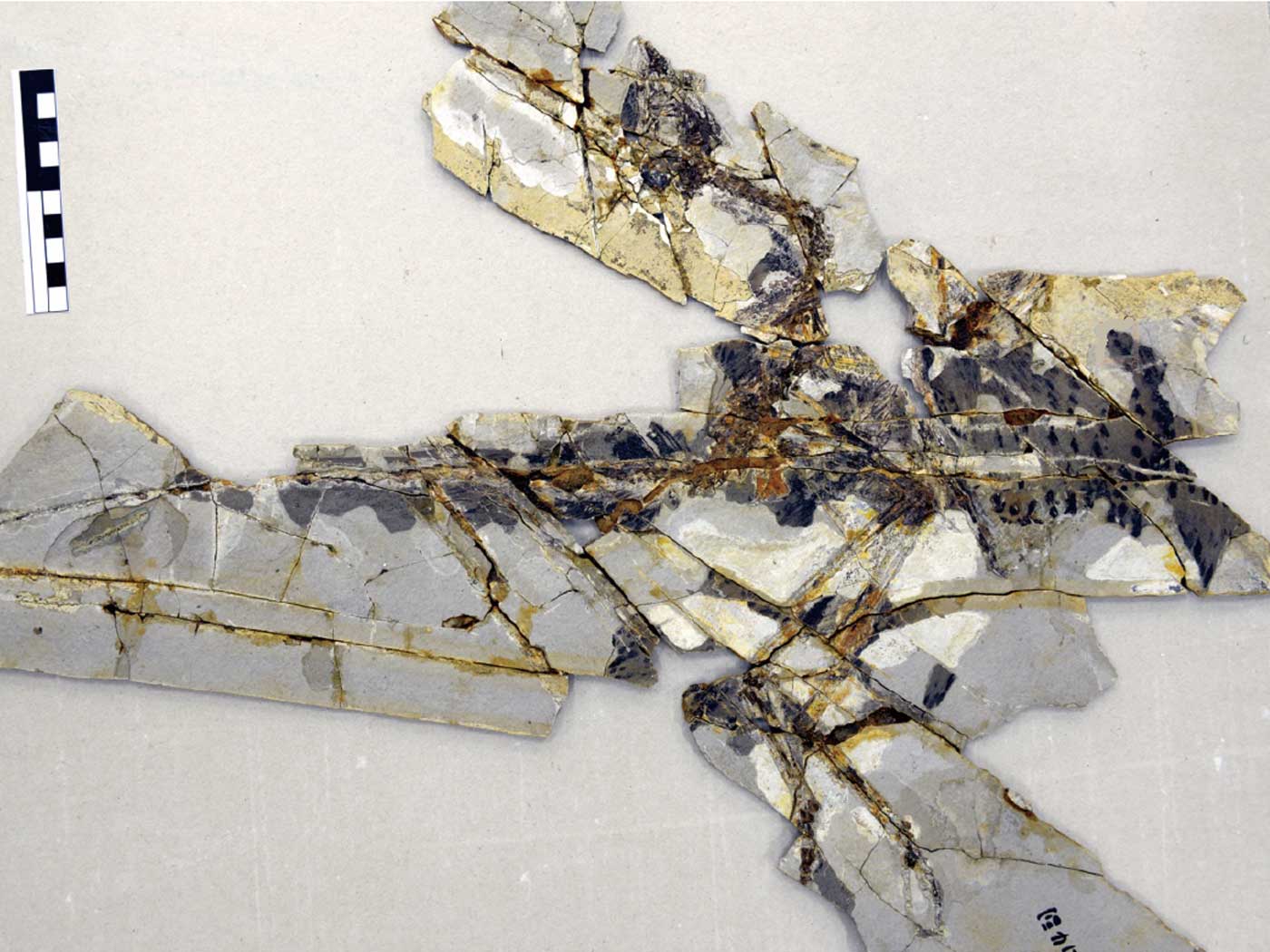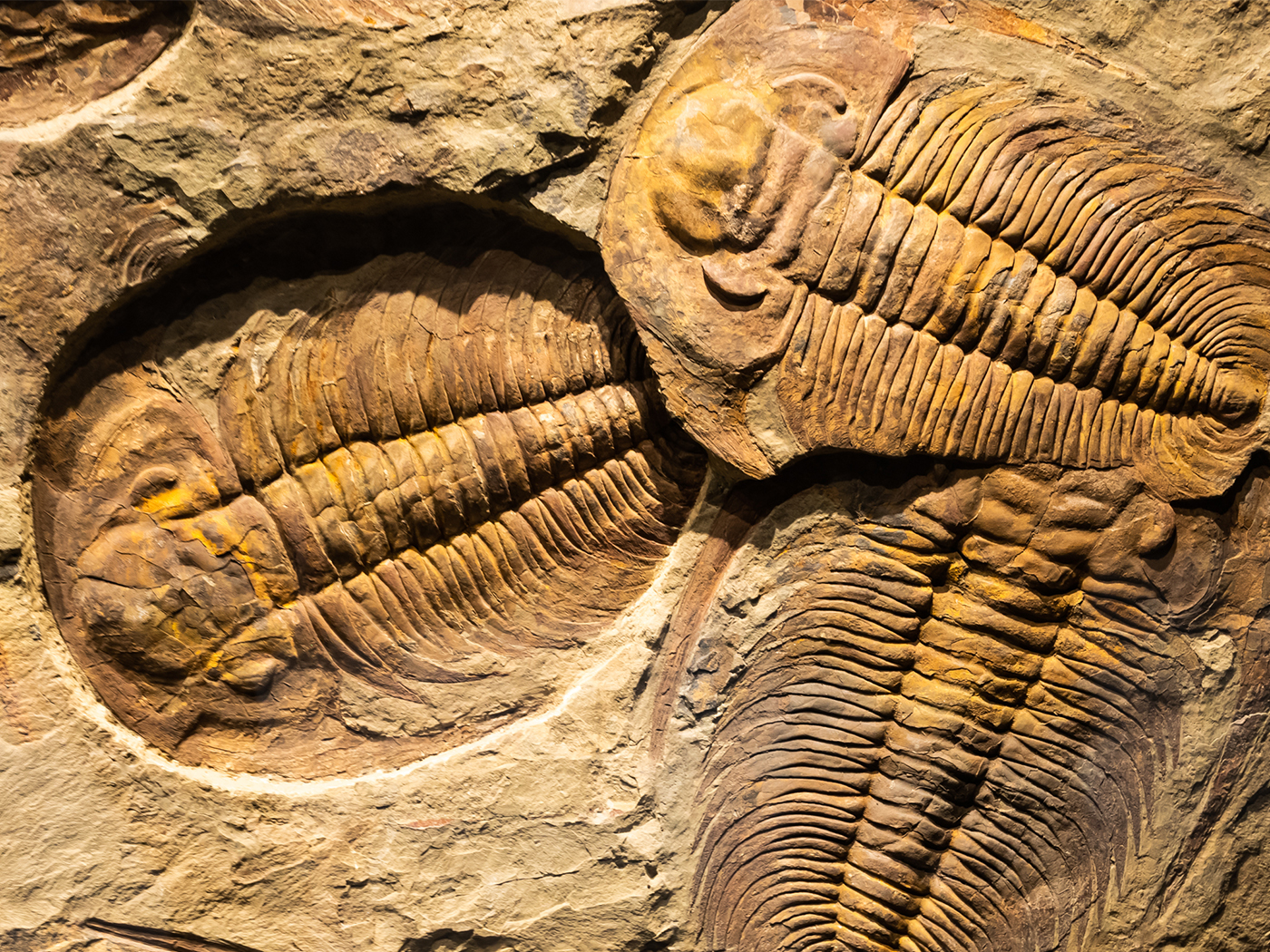Hagfish look creepy. They can act creepy, too. Having no bones, they tie themselves into sliding figure eight knots that help them tear mouthfuls of flesh from the seafloor carcasses on which they feed. And don’t squeeze one unless you want an armload of instantly-expanding slime. Unique slime glands positioned along the sides of their long, slender bodies eject slime-making proteins that fill the gills of would-be predators. A newly described fossil hagfish shows all these unique features—even the slimy ones—and they confront a core aspect of evolution.
Lead author Tetsuto Miyashita of the University of Chicago published results in Proceedings of the National Academy of Sciences.1 His team managed to sandwich the fossil’s chemical details between long discussions of where it should be placed in evolutionary diagrams of supposed relatedness. Darwinists hunt for a bottom-to-top progression of fossils initially showing no backbone, then a partial backbone, and finally a full backbone. But bones found in the lowest layers are a hard act for that tale to follow.2 Amidst speculations of what role hagfish should play in evolution’s imaginary relationships lay little chemical remnants that carry a big message.
That message conveys a conflict between fossils and evolution’s core aspect of long ages. Standard beliefs date this hagfish fossil’s sedimentary rock layer from Lebanon at 100 million years old. Other hagfish fossils come from even deeper layers with age assignments over three times older. Without sniffing a whiff of scientific measurement, evolution demands long time spans. One needs vast time for the imaginary morphing of fish into humans.
Unfortunately for evolutionary time, hagfish pop into the fossil record looking exactly like today’s hagfish. Vast stretches of sediment contain no hagfish fossils, only to be punctuated by these few that show no basic body changes. Why would the same evolutionary processes that supposedly transformed fish into dinosaurs fail to make a single change to hagfish in all that time? With no changes to explain, there’s no need to invoke eons.
In addition to the fossil’s identical structure to modern hagfish, it retained remnants of actual skin proteins, and possibly its original slime proteins. The PNAS team detected organic signatures using synchrotron rapid-scanning X-ray fluorescence (SRS-XRF). It maps the distribution of various elements across the fossil-bearing slab.
The study authors wrote, “The chemical mapping is consistent with the fact that a major component of hagfish slime is tightly coiled, mucin-coated α-keratin threads—pyrolysates [products from heating] of which are characterized by calcium phosphatic content.”1 So they found the phosphates still associated with keratin. Proteins in fossils that haven’t decayed? It’s not the first time. Over 100 such examples show original fossil proteins from around the globe.3
They identified slime glands, intestine, heart, and cartilage remnants in the hagfish fossil. They wrote, “The preservation of decay-prone soft tissues such as branchial pouches and slime suggests that [hagfish fossil] BHI 6445 was rapidly buried.”1 Virtually any old fossil is evidence of rapid burial in fast flowing sediment, but that merely explains how preservation began. Once buried, what can keep ever-present chemicals like oxygen and water from reacting with and destroying all vestiges of original slime given 100 million years? The study authors did not mention, let alone answer, this obvious question.
A recent, worldwide watery catastrophe should be considered to help account for these fossils’ rapid burial and fresh looks. ![]()
The stability of hagfish body forms found in both fossils and oceans, plus the original tissue and slime remnants that make up this hagfish fossil stand in the way of its old age assignment. Instead, a recent, worldwide watery catastrophe should be considered to help account for these fossils’ rapid burial and fresh looks.
References
1. Miyashita, T. et al. 2019. Hagfish from the Cretaceous Tethys Sea and a reconciliation of the morphological–molecular conflict in early vertebrate phylogeny. Proceedings of the National Academy of Sciences. Published online before print, January 22, 2019, accessed January 23, 2019.
2. Shu, D.-G. et al. 2003. Head and backbone of the Early Cambrian vertebrate Haikouichthys. Nature. 421 (6922): 526-529.
3. Thomas, B., and B. Enyart. List of Biomaterial Fossil Papers. Google doc. Posted on docs.google.com, accessed January 24, 2019.
Stage image: hagfish
Stage image credit:Tom McHugh/Getty Images
*Brian Thomas is Science Writer at the Institute for Creation Research.
























